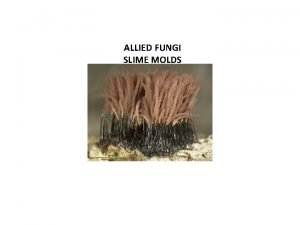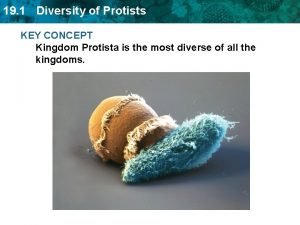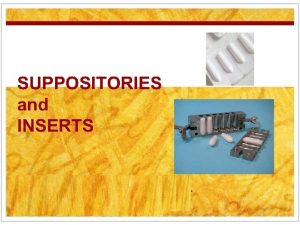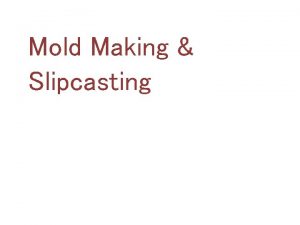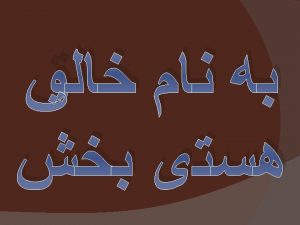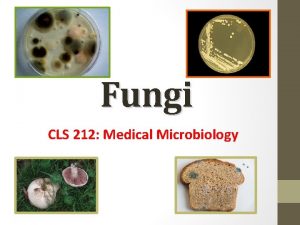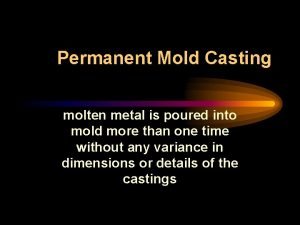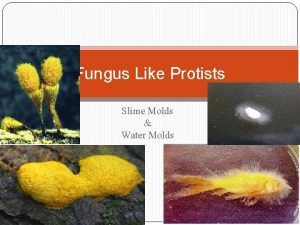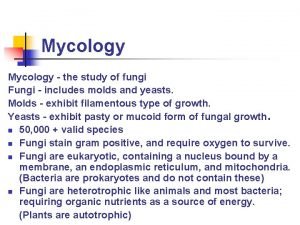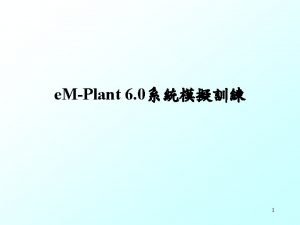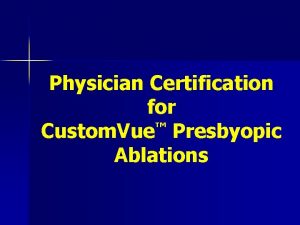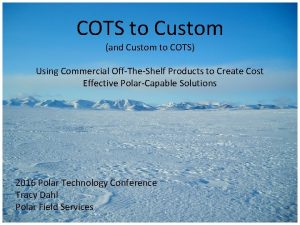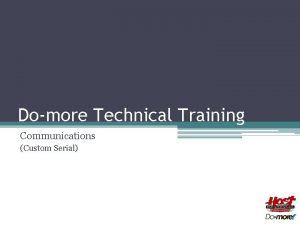CUSTOM MOLDS INC n n CASE STUDY 1
![CUSTOM MOLDS INC. n n CASE STUDY 1 MSC 303. 103] MAY 21, 2001 CUSTOM MOLDS INC. n n CASE STUDY 1 MSC 303. 103] MAY 21, 2001](https://slidetodoc.com/presentation_image_h/c729af02b48aeb29c846a8e6a9a055a6/image-1.jpg)












- Slides: 13
![CUSTOM MOLDS INC n n CASE STUDY 1 MSC 303 103 MAY 21 2001 CUSTOM MOLDS INC. n n CASE STUDY 1 MSC 303. 103] MAY 21, 2001](https://slidetodoc.com/presentation_image_h/c729af02b48aeb29c846a8e6a9a055a6/image-1.jpg)
CUSTOM MOLDS INC. n n CASE STUDY 1 MSC 303. 103] MAY 21, 2001 TEAM 2: Kristin Harvin, Jung Lee, Andrea Price, Kadek Santi

Description n n Established father-son business began with focus on molds and later expanded into the production of plastic parts has traditionally focused on quality, design of both molds and parts, mass production as well as customization total order numbers have remained the same, but clients’ needs have shifted

Issues n n Changing strategies within their clients’ businesses changed order needs in an unexpected way total time from order placement to receipt by customer is much longer than promised more and more products defective bottlenecks in production – can’t predict where, when, why

Analysis n Many issues are the result of general inefficiency in several departments – offices: design conceptualization taking too long, ideas go back and forth between engineers and managers and customers far too much – mold fabrication: needs have changed; need to make very small batches of many different designs, necessitating more runs on different settings (flexible flow strategy)

Analysis (cont. ) n n n Parts fabrication (injection, assembly): needs to make large batches of the same design, necessitating fewer (longer) runs on the same settings (line flow strategy) testing: could probably be more efficient in terms of time spent, and there are too many defects receiving, mixing, and shipping not apparently a problem; do not account for much time spent on project

Recommendations: n n In mold fabrication: focus on many, small-capacity, specialized machines with more workers to oversee settings in parts fabrication (injection, assembly, cutting & trimming): focus on few, large capacity specialized machines with fewer workers, as there are few settings -changes to oversee

Recommendations (cont. ): n Move testing area to more central location for more time-efficient movement of goods back and forth and increased, easier communication between testers and office and manufacturing areas so that problems that caused defects can be quickly recognized and fixed.

Recommendations (cont. ): n Office: – make order placement based on ability to complete product requested in time promised (through communication with other departments) – coordinate inter-department communication in design development with more efficient process (not so much back and forth); CUT TIME SPENT IN HALF

Recommendations (cont. ) – Form position to study market so that customers’ needs can be identified and predicted; use to determine needs of facility and human resources – focus on overall efficiency in terms of process, movement, inter-department communication – evaluate effects of proposed changes on company finances, figuring ROI

Recommendation: Alternative n Analyze market and decide, based on the changes in the needs of the market, whether to focus on parts OR molds – proceed with applicable recommendations made previously

Textbook Question 1 n n What are the major issues facing Tom and Mason Miller? See slides concerning “Issues”

Textbook Question 2 n n Identify the individual processes on a flow diagram. What are the competitive priorities for these processes and the changing nature of the industry? See flow diagram for all information

Textbook Question 3 n n What alternative might the Millers pursue? What key factors should they consider as they evaluate these alternatives? They should consider alternatives as described in “Recommendations” while always considering the needs of the market and the effect the changes will have on finances, including the ROI
 Custom molds inc
Custom molds inc Best case worst case average case
Best case worst case average case Are protists heterotrophic or autotrophic
Are protists heterotrophic or autotrophic Cellular vs plasmodial slime molds
Cellular vs plasmodial slime molds Allied fungi general characteristics
Allied fungi general characteristics Cellular vs plasmodial slime molds
Cellular vs plasmodial slime molds Preparation of suppositories
Preparation of suppositories Slip casting mold making
Slip casting mold making Disadvantages of sbm
Disadvantages of sbm Superficial mycosis
Superficial mycosis Graphite permanent mold casting
Graphite permanent mold casting Slime molds characteristics
Slime molds characteristics Fungi autotroph or heterotroph
Fungi autotroph or heterotroph Project failure case study
Project failure case study




